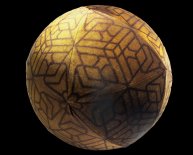
Viscose rayon process
Rayon is a modified, regenerated cellulose fibre. The cellulose raw material can originate from cotton, or more usually, wood pulp. During the viscose rayon process there is some degradation of the polymer, giving lower molecular weight (approximately 200 - 300 repeating units, compared with some 2000 units in cellulose).
In the production starting from the wood pulp, the pulp is boiled with caustic soda, to give soda cellulose. In the next stage, this sheet is crumbed and treated with carbon disulphide, with which it reacts to give sodium cellulose xanthate. This is then dissolved in dilute caustic soda to give the spinning solution.
Viscose rayon synthesis
At the spinning stage, the solution is filtered and pumped through spinnerets (usually made of highly corrosion resistant material, e.g. platinum) into the coagulant bath. This extruding process of polyme r solution into a coagulation bath, is known as a wet spinning process. The coagulant bath for the standard rayons consists of approximately 10 % sulphuric acid. The wet spinning process, which is used for rayon, is also used with e.g. aramides. The wet spinning contains the main steps described in figure below. General spinning alternatives are shown in the next picture.
Main steps at wet spinning.
After spinning, the yarn is washed and dried, and wound up onto delivery packages to the converters.
Instead of the original batch process, the viscose rayon process today is typically a high speed continuous process, giving a very consistent product.
The majority of all rayon at reinforcement is used as continuous filament, but there is still some use of spun staple rayon.
Schematic of the three principal types of fibre spinning: (a) melt spinning; (b) dry spinning; (c) wet spinning. [After Carraher, C. E., Jr. 2002. Polymer News , 27, 3, 91]
General properties of Rayon
Similarly to cotton, rayon swells in water, but the wet strength of rayon is some 30 - 40 % lower than the dry fibre. The tensile properties of regular and wet rayon and cotton are shown in the last figure. (Obs. Polynosic rayon yarn, having higher tenacity and lower swell than standard viscose rayon, through modification of the spinning process). As with cotton the strength is reversible on drying, if the yarn is not allowed to shrink. Standard moisture regain of rayon is 13 %.
Rayon is generally heat resistant up to about 150°C, but loses strength on prolonged exposure and more rapidly at higher temperatures. It starts to decompose at around 210°C. Rayon burns readily but as with cotton, rayon will char in oxygen starved atmosphere and leave a carbon residue.
The susceptibility of rayon to acids is very similar to that of cotton. The same is true with reaction of rayon to alkali, but rayon will lose some strength on swelling in concentrated alkali.
Rayon is susceptible to microbiological attack, but the absence of the small amounts of naturally occurring proteins found in cotton, and the presence of traces of chemicals from the manufacture, render rayon slightly more resistant than cotton.
Identification: Rayon burns readily with the characteristic burnt paper smell; with Shirlastain A, gives a pink colour in the cold and purple on boiling.
- Density 1.52 g/cm3
- Strand 0.17 0.18 tex
- Yarn 122, 184, 244 tex
- Advantage: renewable, good dimension stability (at elevated temperatures)
- Disadvantage: mechanically weak, hygroscopic (11%)
Stressstrain curvesof a) regular rayon types and cotton after process conditioning and b) wet rayon and cotton. [Regenerated Cellulose Fibers, Richard Kotek, in Handbook of Fiber Chemistry Third Edition, Edited by Menachem Lewin]
Special Rayons
As for all synthetic fibres, also many special types of Rayon have been developed. Especially for tyre reinforcement purposes there is e.g. a special type of cellulose-based filament (Lyocell), which is announced to have high dry/wet strength, good dimensional stability and physical properties even in high temperature, and adhesive force over the rubber. The recommended applications are Ultra High Performance Tire and Run Flat Tire [

















